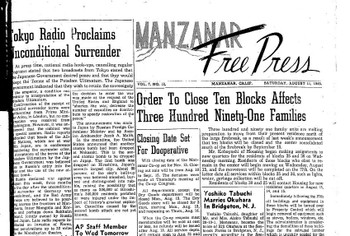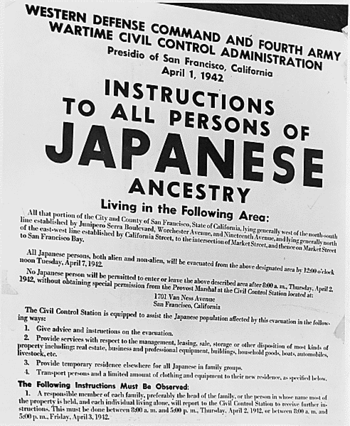JF Ptak Science Books LLC Post 192
For another project I’ve been reading through the Manzanar Free Press Newspaper (volume 7, no. 12) and came upon this slight coverage of the bombing of Nagasaki, printed 11 August 1945. What’s unusual here is that this newspaper was published by the “internees” at the Japanese Relocation Center (officially “The Manzanar War relocation Center” and also called a "relocation camp," "relocation center," "internment camp," and "concentration camp,) at Manzanar, California. 110,000 people of Japanese origin (including a large percentage of American citizens) were forcibly removed and imprisoned via the U.S. Executive Order 9066, issued by President Franklin Roosevelt on 19 February 1942. Manzanar was a semi-dead town 220 miles NE of Los Angeles, located in high desert with huge swings of temperature and unrelenting and challenging weather—semi-killed by the city of Los Angeles, which purchased the water rights to the region in 1929, forcing out the remaining inhabitants. Manzanar had a peak population of about 11,000 before the Japanese were returned to what remained of their previous lives.
In this quick coverage, a report is made on the Japanese accepting the terms of the Potsdam “Ultimatum”, putting an end to the war. The next part is of the reporting is very subdued, announcing the dropping of the second bomb, theorizing that as many as 200,000-300,000 people may have perished in the bombing of Japan’s seventh largest city. And not much more than that. Two hundred words were I’m guessing all that was allowed by the powers-that-be at Manzanar.
Elsewhere in this same issue is a report on the meeting of the Manzanar Boy Scout troop. And something on the graduating class of the Manzanar High School (the high school yearbook for 1945, the last class at Manzanar, was called “Valediction”). Familiar trappings in an unfamiliar trap.
Manzanar is located near Lone Pine in the Owens Valley, which today suffers terrible environmental problems brought on by water-dependent LA sucking out all of the water in the region.
Suggested Reading:
· Armor, John and Wright, Peter. (1989). Manzanar; Photographs by Ansel Adams. Vintage Books.
· Adams Ansel, Benti, Wynne (ed.), Embrey, Sue Kunitomi (contributor), Michael, William H. (contributor). (2001). Born Free And Equal: The Story of Loyal Japanese Americans. Spotted Dog Press. ISBN 1-893343-05-7.
· Cooper, Michael. (2002). Remembering Manzanar: Life In A Japanese Relocation Camp. Clarion Books. ISBN 0-618067-78-7.
· Embrey, Sue Kunitomi. (1972). The Lost Years: 1942–1946. Moonlight Publications. ISBN 0-930046-07-2.
· Garrett, Jessie A., Larson, Ronald C. (ed). (1977). Camp and Community: Manzanar and the Owens Valley. Japanese American Oral History Program: California State University, Fullerton. ISBN 0-930046-00-5.
· Inada, Lawson Fusao (ed.) (2000). Only What We Could Carry: The Japanese American Internment Experience. Heyday Books and the California Historical Society. ISBN 1-890771-30-9.




Comments